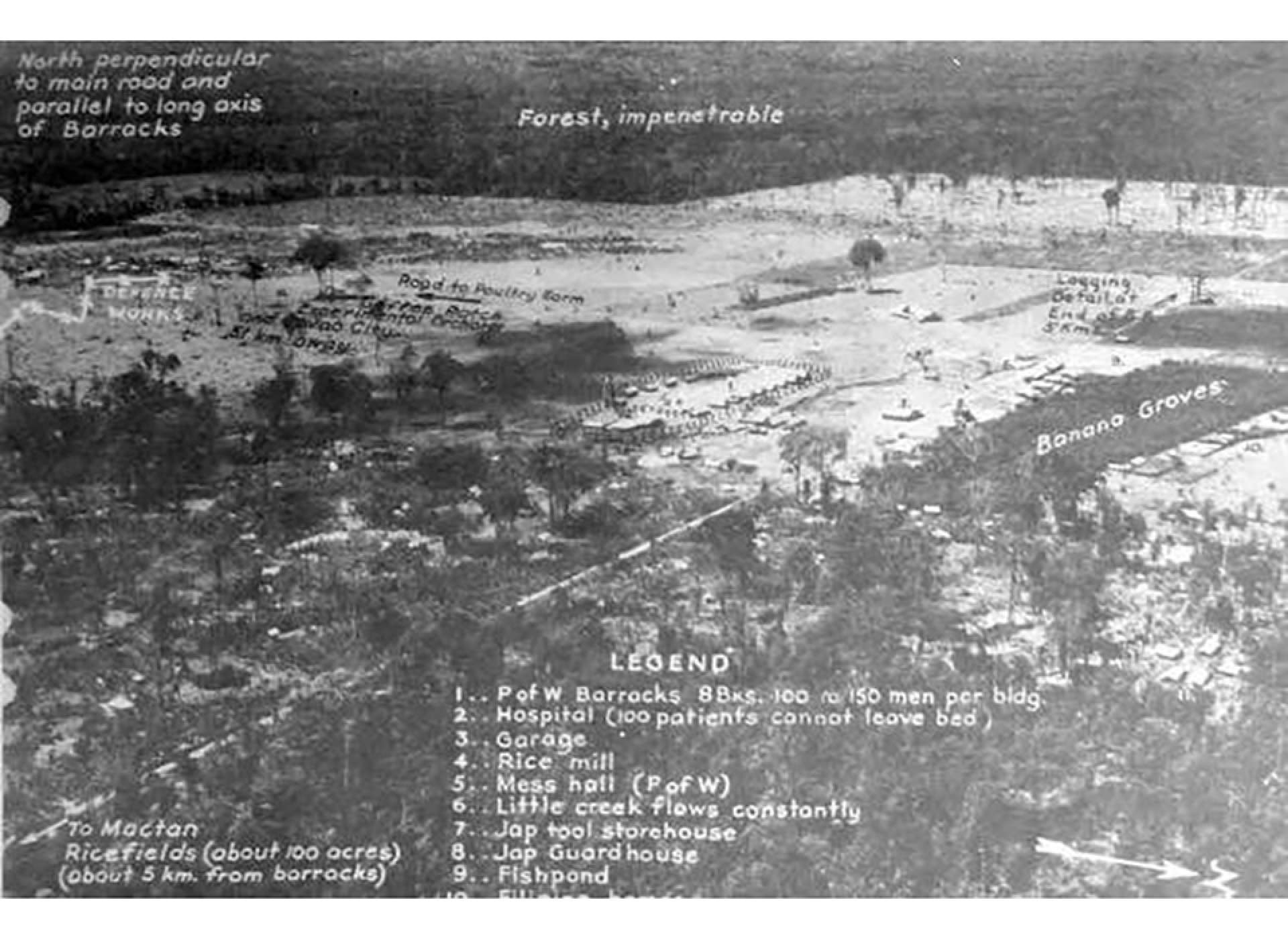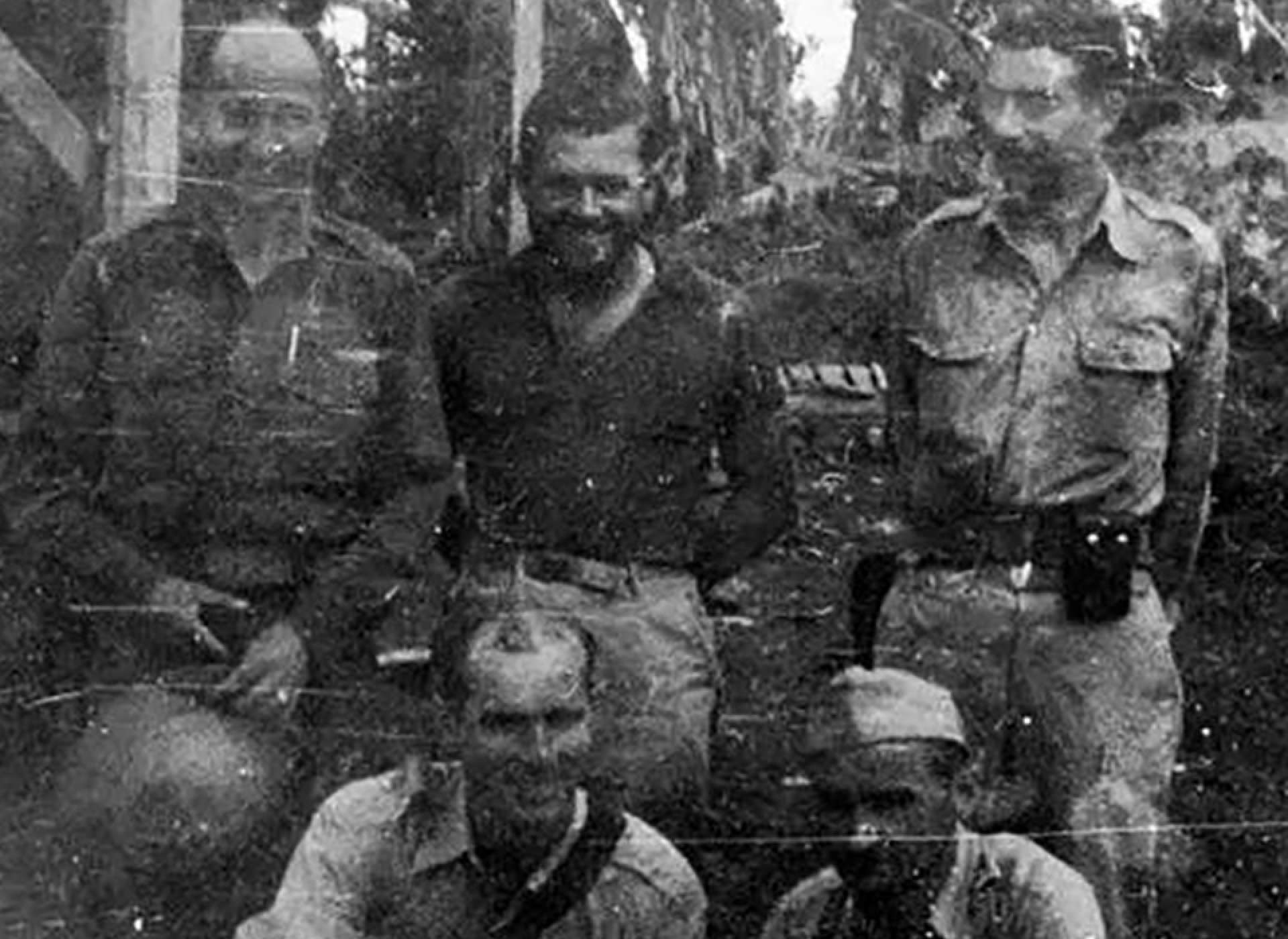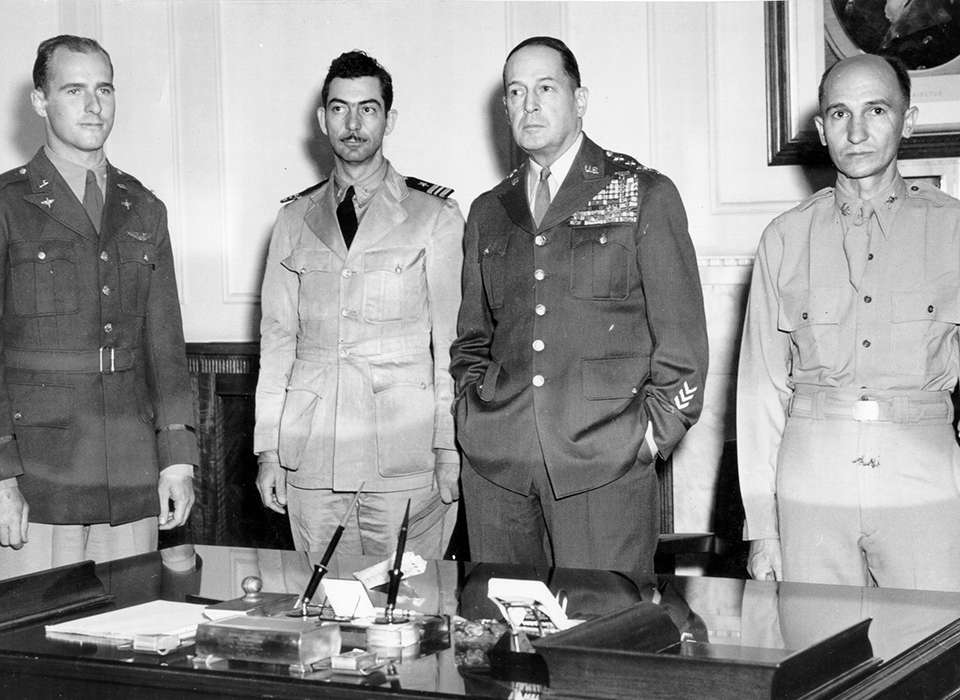Top Image: Left to Right: Captain William Edwin Dyess, Lieutenant Commander Melvyn McCoy, General Douglas MacArthur, and Major Stephen Mellnik in Brisbane, Australia, July 30, 1943. Image courtesy of the US Air Force.
Aficionados of films about World War II will be struck by what appears to be a most glaring oversight in the 1943 motion picture Bataan. The movie, directed by Tay Garnett (remembered also for The Postman Always Rings Twice) and starring Robert Taylor, George Murphy, Lloyd Noland and Desi Arnaz, captures the spirit and camaraderie of American and Philippine soldiers desperately trying to slow the movement of Japanese forces on the Bataan Peninsula.
The heroism and defiance of the 12 men led by Sergeant Bill Dane (played by Taylor), up against terrible odds, spoke vividly to American audiences for whom the 1941-42 struggle to keep the Philippines out of Japanese hands was a dark and painful moment of defeat seared into the nation’s recent memory.
Yet, as stark and unforgettable as Bataan is, one waits—and waits in vain—for any depiction or even any mention of the Death March. How could this horror have possibly been omitted? After all, Bataan generated enormous attention and interest in the United States in 1943 as the war against the Axis powers gradually shifted in the Allies’ favor.
This apparent “oversight” seems all the more shocking when one recalls Edward Dmytryk’s Back to Bataan from 1945, a movie with John Wayne, Anthony Quinn, and Lawrence Tierney, that depicted the Death March and concluded with shots of actual American prisoners who had been liberated from the horrid Japanese POW camp at Cabanatuan.
Without question, it is always dubious to rely too heavily on film as an index of what people knew. Still, the discrepancy between the two wartime movies is most significant. One can and should use this discrepancy to pose the question: what happened between 1943 and 1945 to expose the atrocities committed by the Japanese against American and Filipino prisoners?
The answer lies in the extraordinary escape of the “Davao Dozen” in April 1943 and the revelations they communicated to the American public. Ten Americans and two Filipinos had survived the ultra-brutal conditions of the Death March only to face the degradation of forced labor. Transferred near the city of Davao on the island of Mindanao in the southern Philippines, the journey from the nightmarish Camp One at Cabanatuan in November 1942 took them 10 days—by foot, train, and freighter.
The final destination, a penal colony established in the early 1930s, was a plantation. Mindanao was, and is, a major area of agricultural production, and its rice paddies, coconut and banana groves, and coffee fields naturally attracted the attention of the Japanese occupiers. Rations, the prisoners discovered, were less sparse and medical attention more available than at Cabanatuan where maltreatment, disease, and inadequate food imperiled inmates. Once at Davao, the Japanese authorities grouped the US captives with Filipinos. Bonds of solidarity and trust developed as conditions in the Penal Colony deteriorated.

A photo layout of the Davao Prison Camp courtesy of the US Army.
Several of the American prisoners, eight Marine, Navy, and Army/Army Air Forces officers, and two Army enlisted men, concocted a plan with two Filipinos convicted of murder, Benigno de la Crus and Victorio Jumarong, to break out. After what they had witnessed on the Death March and the conditions of captivity, they felt a powerful burden to live, escape, and bear their chilling stories home.
John Lukacs has recounted how they succeeded in his 2010 book, Escape from Davao: The Forgotten Story of the Most Daring Prison Break of the Pacific War and a documentary based on the monograph, 4-4-43. Lukacs’s research has helped us see fully just what these survivors of the Fall of Corregidor and the Bataan Death March underwent to throw light on atrocities perpetrated by Imperial Japan in the Philippines.
The men chose a Sunday, April 4, 1943, to execute the plan. Sent to work in rice paddies, they bolted for the swamps. “Inhospitable” does not grasp the nature of the environment they entered. It was a frightening place, made all the more forbidding by the presence of crocodiles.After a few hours, the Japanese realized their prisoners had slipped away. Patrols fanned out to find them. The swamp and jungle the prisoners had fled into and seemed so terrifying now hindered their captors. Following a few days of evading Japanese troops, the group headed north. Mountains and rivers tested their resolve.
In northern Mindanao, good fortune came in the form of American and Filipino guerillas. These fighters, led by Lieutenant Colonel Weddell Fertig (he promoted himself to Brigadier General), had refused to surrender to the Japanese and resumed the war in the jungle of Mindanao. Fertig’s contacts with US Navy Lieutenant Commander Charles “Chick” Parsons proved invaluable.
Parsons kept the guerillas supplied and ensured communications with General Douglas MacArthur (MacArthur demanded steady information about Japanese activities on Mindanao from Fertig). The escapees secured food, water, shelter, and medical aid with Fertig. They stayed with him for weeks, in some cases, months.

Davao escapees from left to right, Maj. Stephen Mellnik, Lt. Cmdr. “Chick” Parsons, Lt. Cmdr. Melvyn McCoy, Capt. William Edwin Dyess, and Capt. Charley Smith pose for a photo before commencing their trek to rendezvous with the USS Trout. Image courtesy of the National Archives.
Eventually, seven of what became known as the “Davao Dozen” departed Mindanao separately by submarine for Australia. Lieutenant Commander Melvyn McCoy, Major Stephen Mellnik, and Captain William Edwin Dyess were among the first to get out. The intelligence they transmitted to MacArthur in the summer of 1943 was absolutely vital. He learned of the Bataan Death March from them. Three others stayed in Mindanao and fought with the guerillas. One of them, Second Lieutenant Leo Boelens, did not survive. He was killed by the Japanese in late January 1944.
Once the seven had the opportunity to relate their experiences to US military leadership, they conveyed horrifying narratives of the Death March, recounting that Americans and Filipinos were beheaded, bayoneted, shot, and buried alive on the 60 miles the Japanese marched them. Mellnik, McCoy, and Dyess (Dyess, tragically, was killed in a plane crash in California in December 1943) served as especially powerful eyewitnesses to the hell of Bataan. They passed on, too, information about the systematic deprivation inflicted on the prisoners once the Japanese placed them in camps.
The survivors also described the incredible escape they engineered and how their group connected with Fertig. McCoy and Mellnik told of how they understood all too well that if “we were caught in the attempt we would be put to death in a manner not pleasant to think about.” No group of US prisoners this size under Japanese control replicated the feat of the Davao Dozen.
Stunningly, the Department of War initially imposed a gag order on the men. They could not speak with the press about what they endured. John Dower, as well as Lukacs, noted that it was not until early 1944 that the US government permitted knowledge of the Death March to become public. On February 7, 1944, after obtaining the approval of the Joint Chiefs of Staff, Life published an article titled “Death Was a Part of Our Life” with photographs of nine of the 10 Americans (Sergeant Paul Marshall was mistakenly left out). Written by Mellnik and McCoy, with assistance from Lieutenant Welbourn Kelley (USNR), the piece enraged American opinion. A book, Ten Escape from Tojo, appeared later. What these men revealed bolstered morale as new and even bloodier phases of the island-hopping campaigns of the Pacific War began.
Here are the names of the Americans in the Davao Dozen:
Second Lieutenant Leo Boelens
First Lieutenant Michiel Dobervich
Captain William Edwin Dyess
Second Lieutenant Samuel Grashio
First Lieutenant Jack Hawkins
Lieutenant Commander Melvyn McCoy
Sergeant Paul Marshall
Major Stephen Mellnik
Captain Austin Shofner
Sergeant Robert Spielman
Jason Dawsey, PhD
Jason Dawsey, PhD, is ASU WWII Studies Consultant in the Jenny Craig Institute for the Study of War and Democracy.
Cite this article:
MLA Citation:
APA Citation:
Chicago Style Citation:







![Max Fuchs, New York City cantor, sings as Rabbi Sydney [sic] Lefkowitz, Richmond, VA, conducts the first Jewish services from Germany.](/sites/default/files/styles/max_650x650/public/2025-10/image1.jpg)

